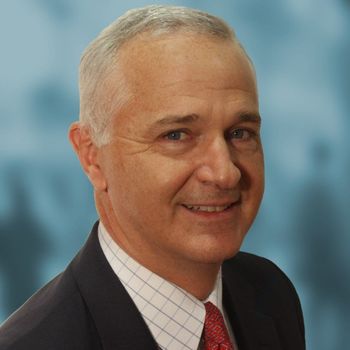
We must do better: Supporting the mental health of young physicians
Key Takeaways
- Burnout and mental health issues are prevalent among medical students and residents, with systemic changes needed to address these challenges.
- The culture of silence in medical training discourages seeking help, leading to isolation and fear of career repercussions.
It is time we raise awareness of provider mental health as an individual problem and start recognizing it as a systemic one.
Health care providers know that mental health is as important for their patients as physical health, and they do their best to remove the stigma often associated with receiving mental health support.
And the need for such support is significant, as evidenced by the fact that one in five adults experience mental health symptoms each year, compared to one in 20 who experience serious illness. But while clinicians focus on patients, we also should acknowledge how mental health and burnout affect those who care for those patients.
The data is alarming. A 2024 study found that more than 60% of medical students and residents report symptoms of
As an emergency physician and the CEO of a national, physician-led health care partnership, I have seen the personal toll and the institutional patterns perpetuating this
The culture of silence
Medical training rewards perfectionism. From the first anatomy lab to the final fellowship interview, we are conditioned to push through pain, deny weakness, and equate vulnerability with failure. Admitting mental health struggles does not just feel risky — it can feel disqualifying.
That culture of silence has deadly consequences. Too many physicians suffer in isolation. Too many fear that asking for help will jeopardize their careers, reputation, or license. And too often, they are right to worry.
Systemic change is the only real solution.
The institutional barriers
There are deeply embedded structural obstacles that discourage young doctors from seeking help:
- Punitive credentialing policies that ask invasive questions and often treat mental health as a liability.
- Lack of protected time for therapy or peer support groups.
- Work environments that conflate wellness with “resilience training” rather than addressing workload, staffing, or support.
We cannot yoga our way out of burnout. Wellness is not a side dish—it must be baked into how we train, support, and retain physicians.
What health care institutions can do
Physician well-being should not be optional, and it should not be performative. Here are three steps every healthcare organization should take now:
- Normalize mental health care access
Mental health support must be easy to access, confidential, and free from career repercussions. Organizations should audit their licensing and credentialing processes to remove stigmatizing language and barriers to care. - Invest in mentorship and community
Young physicians often feel isolated, especially in high-acuity environments like the emergency department. Structured peer support, mentorship programs, and leadership check-ins can create safe spaces for providers to share. - No guilt confidential support
- Move away from engagement to fulfillment
It has been shown on multiple occasions that physicians have lower burnout when they have a sense of ownership. Strict employment models make it difficult for physicians to see the fruits of their hard work. Health care complexity has eradicated most independent physician practices, which has led to the lack of empowerment of providers. Models that give physicians some form of ownership can help to change physician burnout to fulfillment. - Redesign the system, not just the individual
The core issue is not a lack of resilience — it is a lack of sustainability. We need to redesign schedules, staffing, and workflows to allow for recovery, humanity, and care. We need to lead with empathy, not just efficiency.
Healthcare complexity
Health care has become increasingly complex in the last decade. The advent and implementation of electronic medical records improved documentation, but it also made connecting with patients much more difficult. With government and private payors making reimbursement increasingly difficult, provider compensation is as uncertain as ever. As healthcare leaders, we can decrease this level of complexity and uncertainty. Especially, with the broad implementation of artificial intelligence and ambient listening, documentation and coding can be streamlined, putting the emphasis back on the fulfilling work of caring for patients.
A personal reflection
I still remember being a medical student, exhausted and overwhelmed, unsure if I belonged. I also remember what helped me through: the rare moments when a mentor spoke honestly about the emotional weight of the job, or when someone asked me, not about my grades or research, but how I was really doing.
We need more of those things: honest conversations, real resources, and leaders who understand that preserving the well-being of our physicians is a prerequisite for excellent care.
A call to action
We ask young doctors to carry the weight of life-and-death decisions, often with little support and unrealistic expectations. If we genuinely care about our future workforce, we must build systems that care for them. Their lives — and the lives of the patients they serve — depend on it.
Newsletter
Stay informed and empowered with Medical Economics enewsletter, delivering expert insights, financial strategies, practice management tips and technology trends — tailored for today’s physicians.








